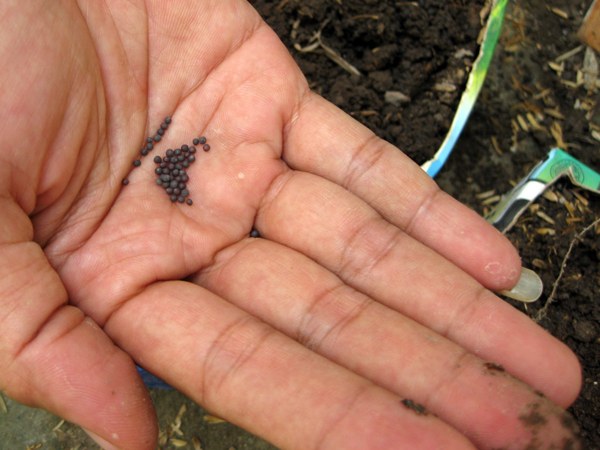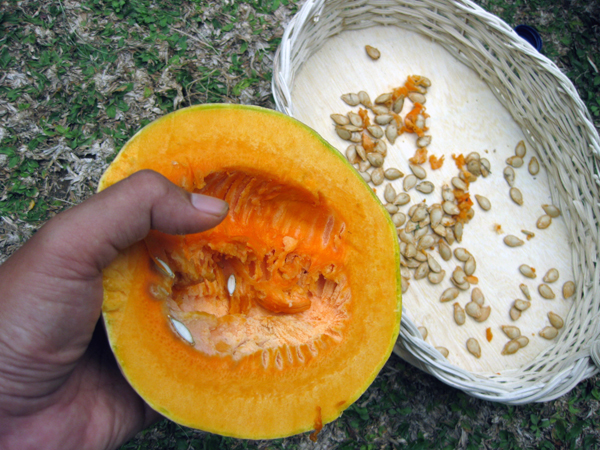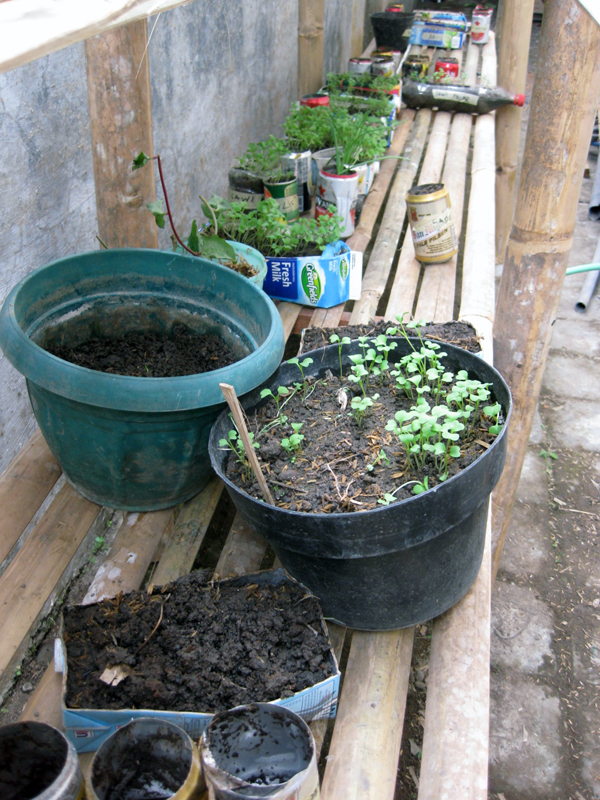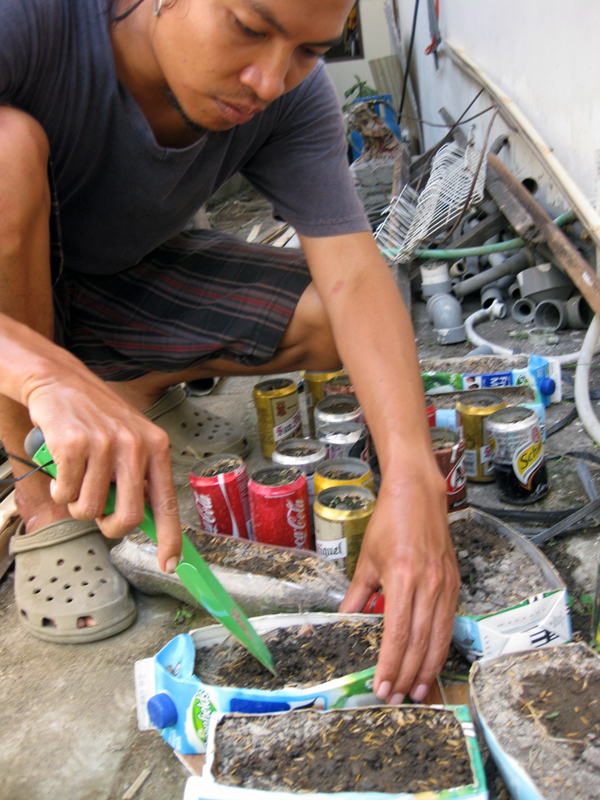 Make sure the soil you use for seedling pots is healthy, slightly damp, and contains lots of organic materials so that the seeds can grow strong.
Make sure the soil you use for seedling pots is healthy, slightly damp, and contains lots of organic materials so that the seeds can grow strong.
 Fill the seedling pots with potting soil, this can be topsoil mixed with manure, rice husks, and other organic materials. Make sure there are some holes in the bottom of the pots so that water doesn’t collect there.
Fill the seedling pots with potting soil, this can be topsoil mixed with manure, rice husks, and other organic materials. Make sure there are some holes in the bottom of the pots so that water doesn’t collect there.
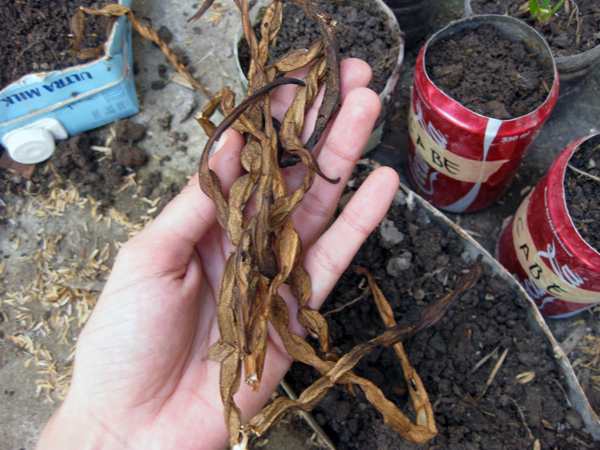 Long beans and snow pea seed pods; peel and remove the seeds.
Long beans and snow pea seed pods; peel and remove the seeds.
 Plant the seeds with a happy heart and smile on your face. Think of the seed like your child. A child will grow healthy in a family that is filled with love.
Plant the seeds with a happy heart and smile on your face. Think of the seed like your child. A child will grow healthy in a family that is filled with love.
Label the seedling containers so you don’t forget what kind of seeds you planted. Place the seedlings in a place that is protected from direct sunlight, strong winds, and heavy rain. Ants love baby seedlings, so to protect them from ant armies, place your seedlings on a raised platform or table and put the table legs in a container of water. Remember to water your seedlings every morning and afternoon.
Some rhizome plants, like ginger, bongkot, and turmeric, can be planted directly in the land. The same goes for plant and root cuttings, such as cassava, bamboo, and banana. Pumpkin and long bean seeds also grow well directly in the lands. Seedlings and extra care is most important for vegetable plants, such as sawi, lettuce, chili, and tomatoes.
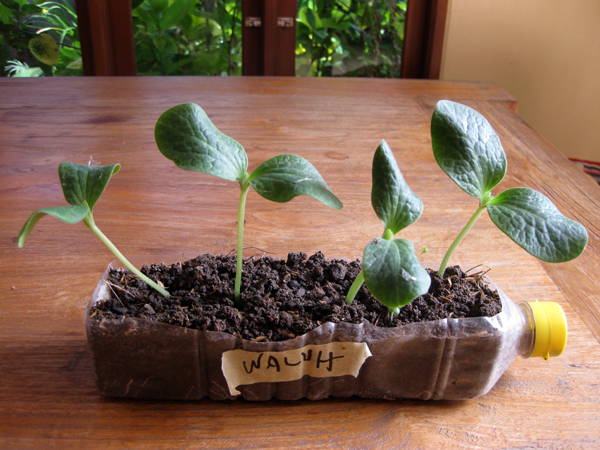 After a week, cute baby plants will start to appear :)
After a week, cute baby plants will start to appear :)
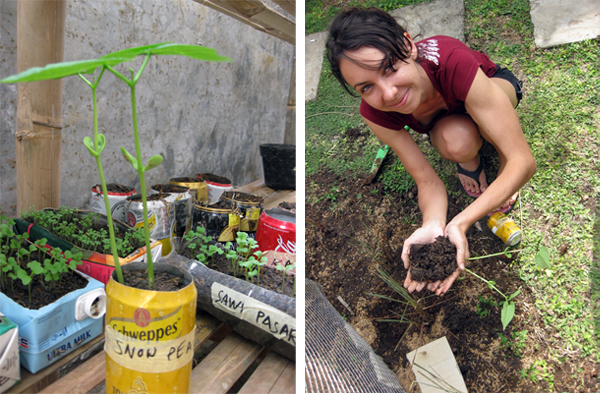 After about two weeks the seedlings can be planted in the land. Carefully remove the seedlings from the containers. Make sure to not damage the roots. Add the remaining potting soil around the plant roots so that the seedlings can adapt well to their new environment. Different types of plants can be planted close together, and this diversity is good for your garden.
After about two weeks the seedlings can be planted in the land. Carefully remove the seedlings from the containers. Make sure to not damage the roots. Add the remaining potting soil around the plant roots so that the seedlings can adapt well to their new environment. Different types of plants can be planted close together, and this diversity is good for your garden.
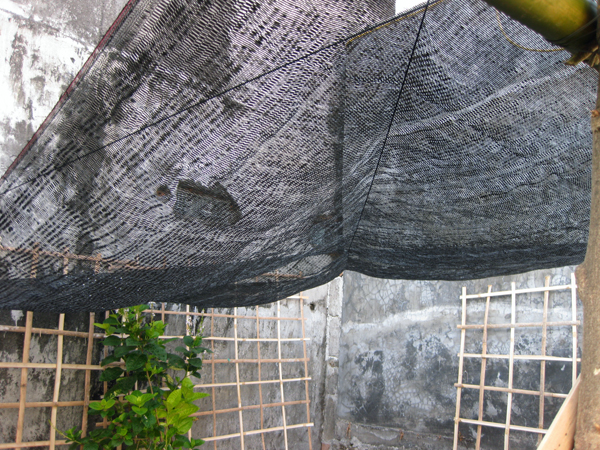 If your land or garden bed is in direct sunlight or it is too hot during the dry season, you can add some shade, like the netting used here. Netting works well because it still allows some sunlight to pass through. Care for the young seedlings well. Make sure the soil doesn’t dry out and there is enough mulch around the young plants.
If your land or garden bed is in direct sunlight or it is too hot during the dry season, you can add some shade, like the netting used here. Netting works well because it still allows some sunlight to pass through. Care for the young seedlings well. Make sure the soil doesn’t dry out and there is enough mulch around the young plants.
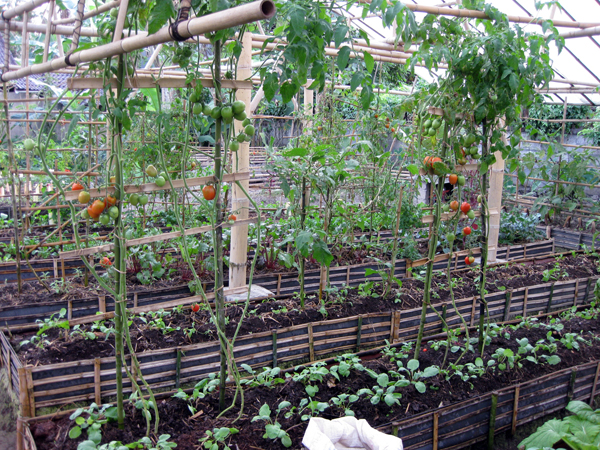 A healthy, organic home garden will not only reduce your expenses, but can also provide nutritious food for the whole family. And the area round your house will be greener, cooler, and of course beautiful. Extra vegetable produce can be shared with your neighbors, and they will love you more for that. But, make sure not to make your neighbor’s wife jealous. Remember, urban farming is the realization of the slogan: the neighbor’s garden is always greener.
A healthy, organic home garden will not only reduce your expenses, but can also provide nutritious food for the whole family. And the area round your house will be greener, cooler, and of course beautiful. Extra vegetable produce can be shared with your neighbors, and they will love you more for that. But, make sure not to make your neighbor’s wife jealous. Remember, urban farming is the realization of the slogan: the neighbor’s garden is always greener.
Welcome to the Urban Farming Syndicate! Follow @BaliUrbanFarm on Twitter.
Click here to read part 1 of this article.




